Imagine a world where your work-from-home schedule feels less like a chore and more like a journey to personal freedom. Sounds dreamy, right? With the rise of remote work, many are grappling with the challenge of finding that sweet spot between flexibility and productivity.
How do you balance the need for structure with the desire for spontaneity? Let’s embark on this exploration together, discovering how to craft a work-from-home schedule that not only boosts your remote work productivity but also enriches your work-life balance.
Understanding the Work-From-Home Schedule
In the age of digital nomads and virtual offices, understanding the essence of a work-from-home schedule is crucial. It’s not just about ticking off tasks; it’s about designing a life where work and personal time coexist harmoniously.
The Importance of a Structured Routine
Think of a structured routine as the backbone of your remote workday. It offers predictability and reduces decision fatigue, allowing you to focus on what truly matters.
Without a set routine, it’s easy to drift into a sea of endless tasks, blurring the lines between professional and personal life. A well-structured routine acts as a lifeline, providing clarity and direction.
Try using digital planners or apps to outline your daily tasks and goals. This helps in maintaining focus and ensures that you allocate time effectively across various activities.

Balancing Flexibility and Productivity
While structure is essential, too much rigidity can stifle creativity. The beauty of a work-from-home schedule lies in its flexibility. It allows you to tailor your work hours to your peak productivity times, whether you’re an early bird or a night owl. This flexibility can lead to higher job satisfaction and increased output.
Experiment with different work patterns to find what suits you best. Some people thrive with a 9-5 structure, while others find success in breaking their day into focused sprints with ample breaks.
Crafting Your Ideal Work-From-Home Schedule
Creating a schedule that aligns with your lifestyle and work demands requires introspection and experimentation. Here’s how to get started:

Identifying Your Peak Productivity Hours
Everyone has unique energy cycles. By identifying your peak productivity hours, you can schedule your most demanding tasks during these times. This ensures that you’re working when your mind is sharpest, leading to higher quality work and reduced stress.
Consider tracking your energy levels over a week to determine when you feel most alert and focused. Use this data to plan your workday, dedicating high-energy periods to challenging tasks and low-energy times to routine work.
Setting Your Work Hours
Once you know your productivity peaks, it’s time to set your work hours. Consistency is key. Establish a start and end time for your workday to help create boundaries between work and personal life. This not only aids in maintaining work-life balance but also signals to others when you are available.

Creating a Dedicated Workspace
Your environment significantly impacts your productivity. Having a dedicated workspace, free from distractions, can enhance focus and efficiency. Whether it’s a home office or a quiet corner, ensure it’s equipped with everything you need to work comfortably and effectively.
Personalize your workspace with items that inspire you, such as plants, artwork, or motivational quotes. This can make your work environment more inviting and boost your mood.
Incorporating Breaks for Better Focus
Breaks are not a luxury; they are a necessity for sustaining focus and creativity. Techniques like the Pomodoro Technique, which involves working in 25-minute blocks followed by short breaks, can be highly effective. Regular breaks prevent burnout and keep your mind fresh.
Here’s a simple schedule you might try:
| Time | Activity |
|---|---|
| 9:00 AM – 11:00 AM | Deep Work |
| 11:00 AM – 11:15 AM | Break |
| 11:15 AM – 1:00 PM | Meetings/Emails |
| 1:00 PM – 2:00 PM | Lunch |
| 2:00 PM – 4:00 PM | Project Work |
| 4:00 PM – 4:15 PM | Break |
| 4:15 PM – 5:00 PM | Wrap Up |
Strategies for Enhancing Remote Work Productivity
Boosting your remote work productivity involves more than just hard work; it’s about smart work. Here are some strategies to enhance your efficiency:

Using Time-Blocking Techniques
Time-blocking involves dedicating specific blocks of time to different tasks or activities.
This technique helps prevent tasks from expanding beyond their allocated time, ensuring a disciplined approach to work. By visualizing your day in blocks, you can manage your time more effectively and reduce procrastination.
Minimizing Distractions at Home
Distractions are a common challenge in remote work. To minimize them, communicate your work schedule to household members, use noise-canceling headphones, and consider using apps that block distracting websites. Creating a distraction-free zone can significantly improve your focus and productivity.

Leveraging Technology for Organization
Technology can be a powerful ally in organizing your work-from-home schedule. Utilize tools like project management software, calendar apps, and task trackers to streamline your workflow. These tools not only help in tracking progress but also in setting reminders for important deadlines.
Fostering Work-Life Balance While Working Remotely
A healthy work-life balance is pivotal for long-term success and happiness in remote work. Here’s how to achieve it:
Setting Boundaries with Work Hours
Establishing clear boundaries is essential. Inform your colleagues of your work hours and resist the urge to respond to work communications outside these times. This helps in maintaining personal time and prevents work from encroaching on your private life.

The Role of Communication in Remote Work
Effective communication is the cornerstone of successful remote work. Regular check-ins with your team, clear articulation of tasks, and utilizing video calls for more personal interaction can bridge the gap created by physical distance.
Schedule regular team meetings to foster a sense of connection and collaboration. This keeps everyone aligned and helps in maintaining team spirit.
Finding Time for Self-Care and Hobbies
Don’t let work consume all your time. Prioritize self-care and hobbies to recharge your mind and body. Whether it’s reading, exercising, or pursuing a hobby, these activities provide a much-needed break from work and enhance overall well-being.
Navigating Challenges of Remote Work
Remote work comes with its own set of challenges. Addressing these effectively can enhance your remote work experience:

Combating Feelings of Isolation
Working remotely can sometimes feel isolating. Combat this by staying connected with colleagues through virtual coffee breaks or social chats. Participating in online communities related to your interests can also provide a sense of belonging.
Managing Workload and Avoiding Burnout
It’s crucial to manage your workload to avoid burnout. Prioritize tasks, delegate when necessary, and don’t hesitate to say no to additional responsibilities if your plate is full. Taking regular breaks and ensuring adequate rest is vital for maintaining mental health.
Adjusting to Changes in Work Dynamics
The dynamics of remote work can differ significantly from traditional office settings. Being adaptable and open to new ways of working, such as embracing asynchronous communication, can help in adjusting smoothly to these changes.

Celebrating Your Work-from-Home Wins
Amidst the hustle, it’s important to pause and celebrate your achievements. Recognizing your successes boosts motivation and morale.
Reflecting on Achievements
Take time to reflect on your accomplishments, both big and small. This not only provides a sense of fulfillment but also motivates you to strive for greater heights.

Sharing Success Stories with Peers
Sharing your wins with peers fosters a positive work environment. It encourages others and creates a culture of recognition and support.
Embracing the Journey of Remote Work
Finally, embrace the journey of remote work. It’s an evolving process that offers immense opportunities for personal and professional growth. Stay open to learning and adapting, and enjoy the freedom and flexibility that comes with it.





